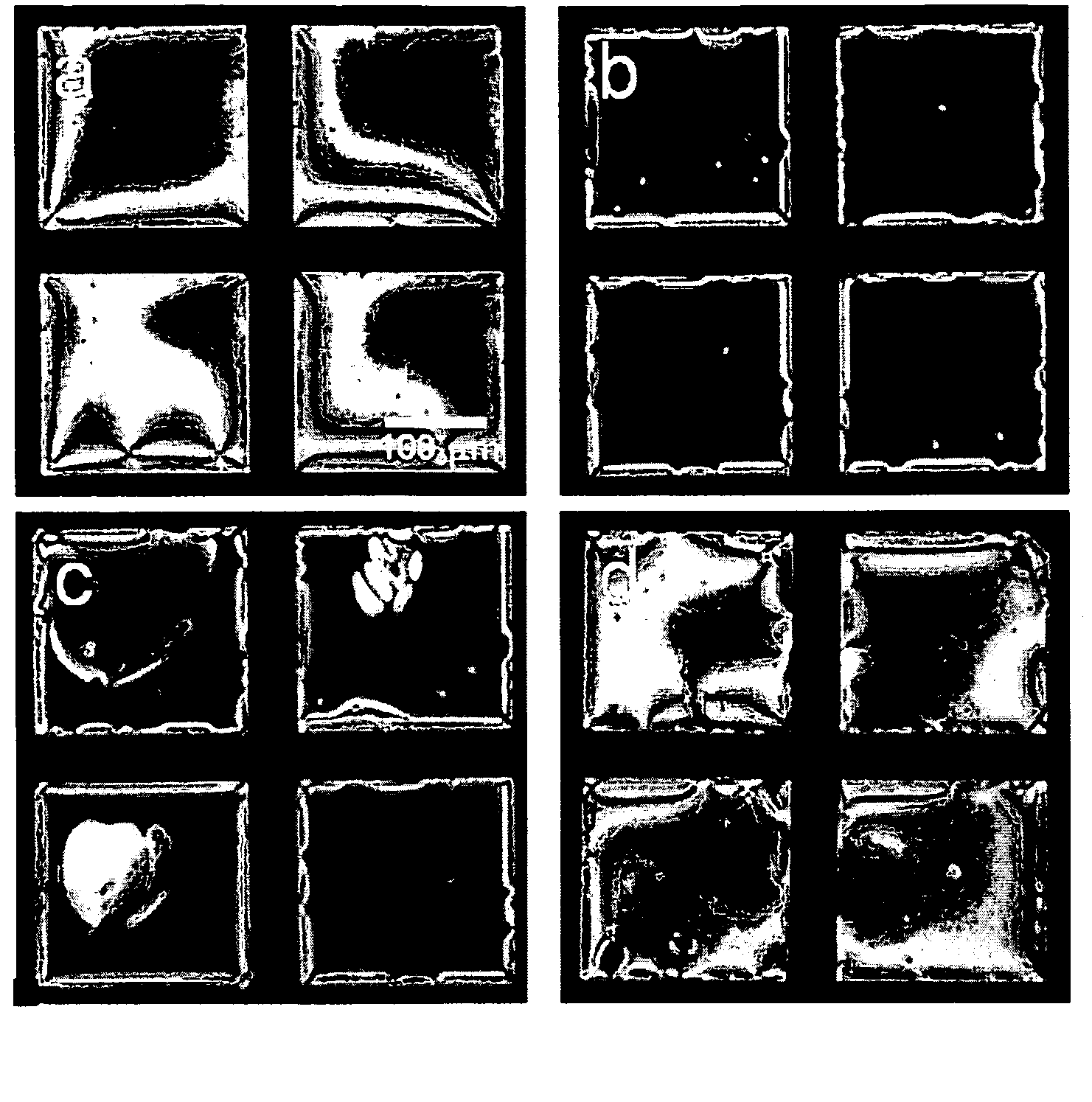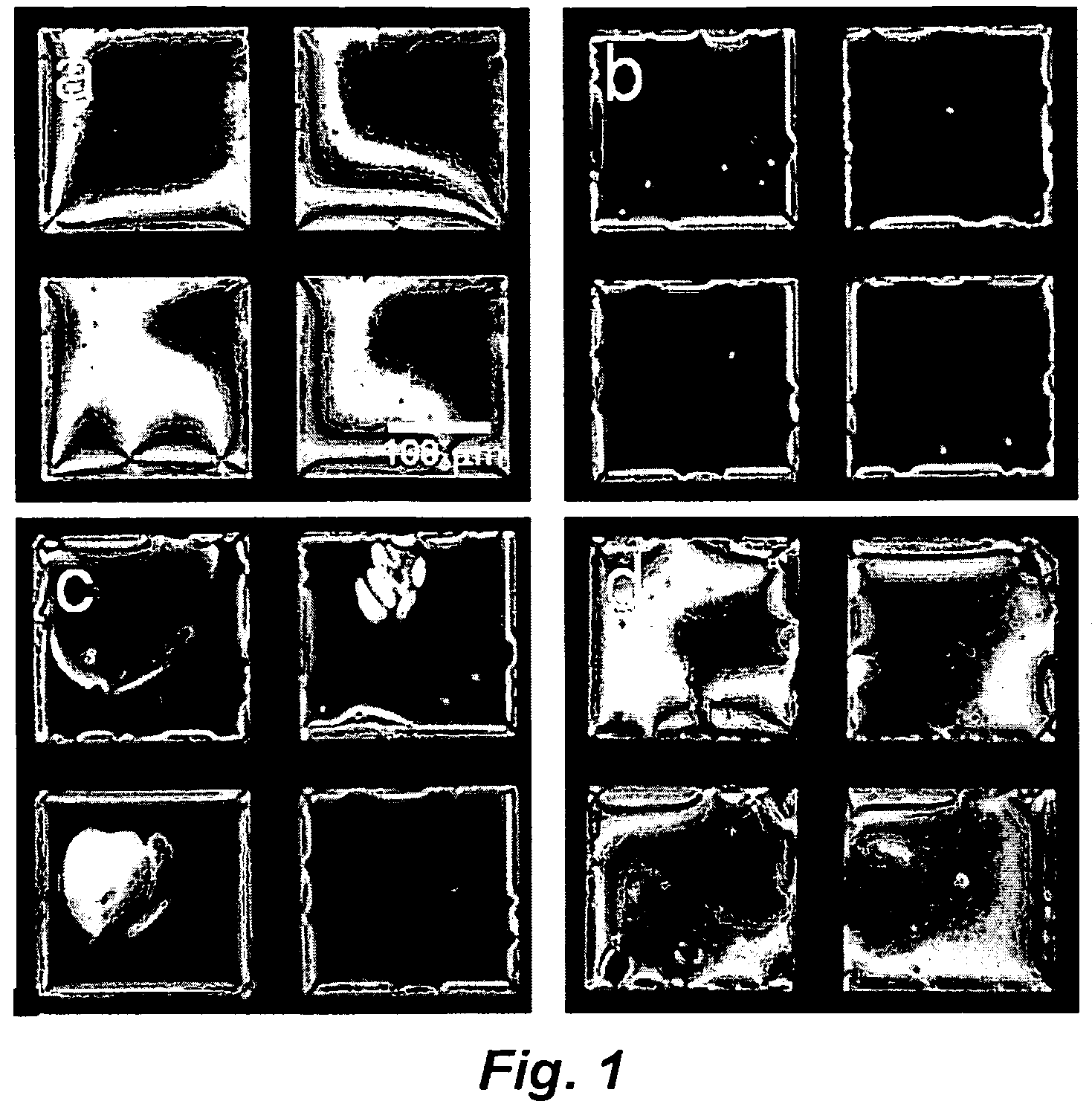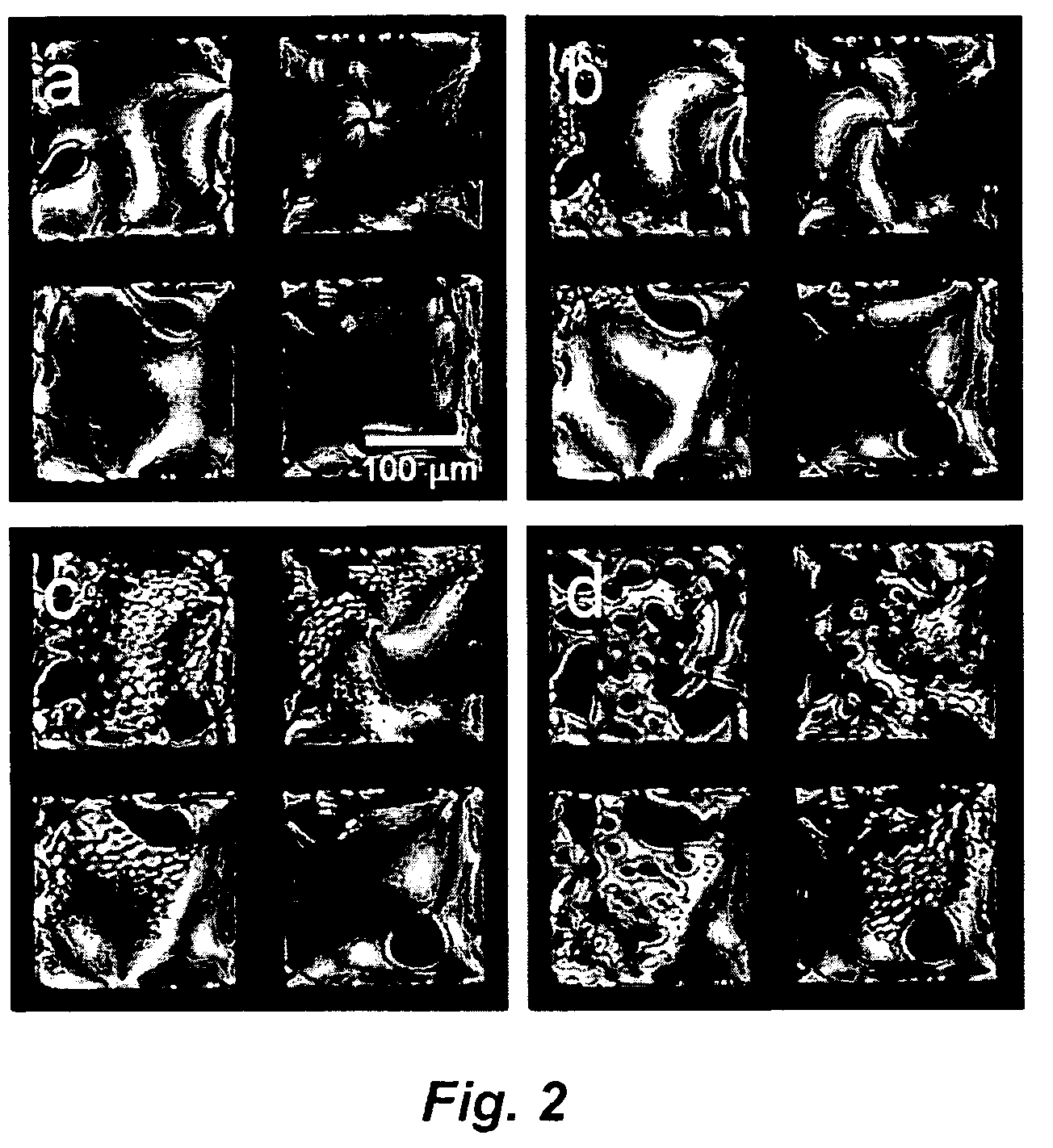Methods and devices for detecting nucleic acid hybridization
a nucleic acid hybridization and nucleic acid technology, applied in the field of nucleic acid hybridization detection methods and devices, can solve the problems of insufficient understanding of dna interactions with charged surfaces, failure to detect nucleic acid hybridization using liquid crystals and cationic surfactant interfaces, etc., to achieve accurate and sensitive detection of nucleic acid hybridization, cost-effective, convenient and portable system
- Summary
- Abstract
- Description
- Claims
- Application Information
AI Technical Summary
Benefits of technology
Problems solved by technology
Method used
Image
Examples
examples
[0043]The following examples are meant to illustrate certain embodiments of the invention, and not to limit the scope of the inventions disclosed herein.
Materials
[0044]LC Film Preparation: Borosilicate glass slides were cleaned with a fresh piranha solution composed of 30% aqueous H2O2 and concentrated H2SO4 (1:3 v / v) for 1 h at 70° C. An octadecyltriethoxysilane (OTES) (Gelest, Inc.) self-assembled monolayer (SAM) was deposited on the glass following the procedure described by Walba et al. Briefly, clean glass slides were rinsed with acetone and toluene and submerged in a solution of toluene, OTES, and butylamine (200:3:1 v / v) for 30 min at 60° C. Following, the glass slides were rinsed with toluene, dried with a stream of nitrogen, and stored under a vacuum at room temperature for 24 h prior to use. This produced a surface with a water contact angle ˜95° as measured optically by the sessile drop method with a goniometer; sufficient to induce homeotropic alignment of the liquid cry...
PUM
| Property | Measurement | Unit |
|---|---|---|
| temperature | aaaaa | aaaaa |
| hole sizes | aaaaa | aaaaa |
| thickness | aaaaa | aaaaa |
Abstract
Description
Claims
Application Information
 Login to View More
Login to View More - R&D
- Intellectual Property
- Life Sciences
- Materials
- Tech Scout
- Unparalleled Data Quality
- Higher Quality Content
- 60% Fewer Hallucinations
Browse by: Latest US Patents, China's latest patents, Technical Efficacy Thesaurus, Application Domain, Technology Topic, Popular Technical Reports.
© 2025 PatSnap. All rights reserved.Legal|Privacy policy|Modern Slavery Act Transparency Statement|Sitemap|About US| Contact US: help@patsnap.com



